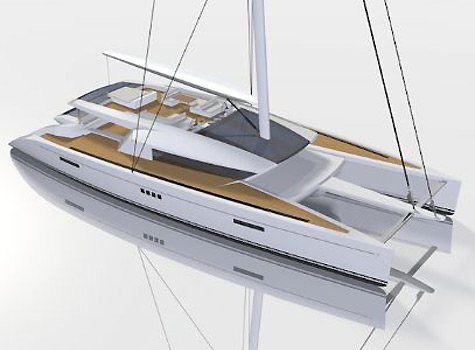
The Code [e] 100 is a catamaran in the 100 foot range, designed by Berret Racopeau Yacht Design. The [e] stands for efficiency, environment, and ecological soundness. While first introduced in 2009, this yacht concept is becoming more and more relevant in the last few years, with many yacht owners being more concerned over their impact on our planet.
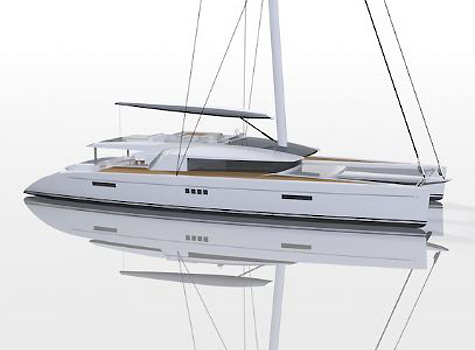
One of the first things about the Code [e] 100 that coincides with lowering its impact on the environment is that it is a sailing catamaran, using the Earth’s natural winds for most of it’s propulsion. In addition, this catamaran goes even further, harnessing the power of the sun through photovoltaic cells, harnessing every kilowatt possible, as well as using this natural energy in the most efficient ways possible.
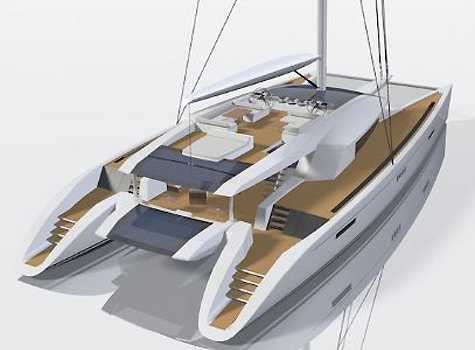
One of the ways this is utilized is in the area around the base of its main mast, as well as aft of the main deck and fly bridge. These combine to make more than forty square meters of photovoltaic cells, providing the vessel which can produce 35 kilowatts of electrical power. In addition, more energy is also available with retractable wind turbines, producing another 1100 watts of power. These turbines are not the traditional ones found on many wind farms and other applications, these are state of the art vertical axis turbines, which are much quieter, take up less space, and can operate in winds just ten miles an hour. There are also hydro electrical generating propellers, which generate free electricity when the yacht is sailing. All of these forms of renewable energy combine and feed into large lithium batteries, storing energy during the day for use at night, or when needed to run the harbor based propulsion system, for maneuvering into ports. Berret Racopeau also understands that there are going to be times when you will need a little extra, supplied by diesel engines that can be run in emergencies.
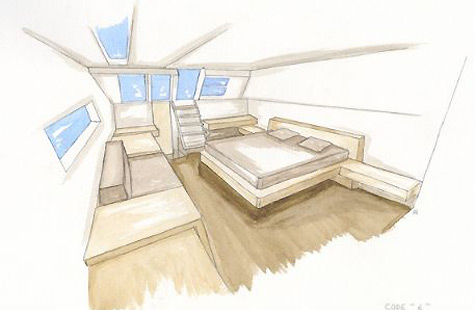
The Code [e] 100 catamaran also takes into consideration energy usage as well. The hull has been designed to have a low wetted surface, as well as minimal draft, in order to reduce the propulsion demand, whether under sail or with the use of the diesel motors. Air conditioning utilizes fresh air intakes, cutting down on the need to keep the interior cool by electricity. Water and other heating needs is done by the sun’s rays passing through the roof of the deck, heating water pipes and providing ambient heat.
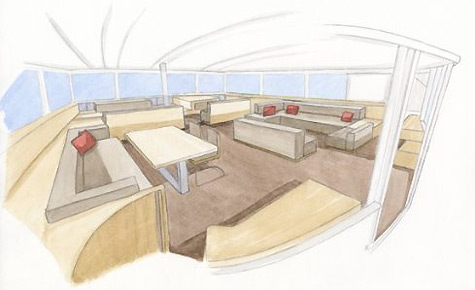
The Code [e] 100 will have a much reduced overall load due to the use of a fresh water recovery system, filtering and storing rain water that collects on the decks, reducing the size of the fresh water makers on board. The electricity used for lighting is greatly reduced by the use of high intensity, yet low consumption LED bulbs. The interior concepts will connect with the exterior design to help conform with environmental issues. For an example the foot of the main mast will also act as an observation lounge, which is both visually inviting as well as electronically efficient.
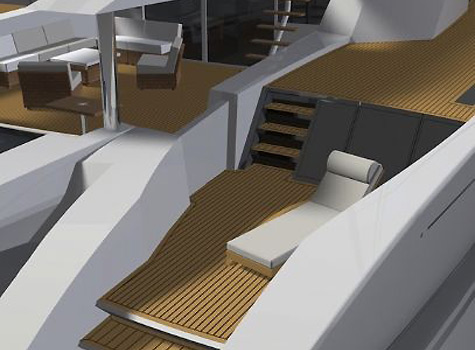
The Code [e] 100 catamaran will also be fully constructed with lightweight, yet extremely durable materials, using carbon and PVC foam. This E class sailing catamaran with also use more sustainable interior materials like Balsa Wood, Bamboo, and even cultivated organic fibers.
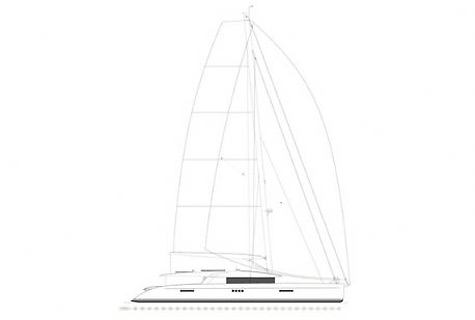
* * *
Related links:
Berret Racopeau Yacht Design
Photo: berret-racoupeau.com

